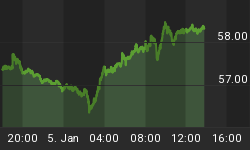So here we are half way through the year 2005 and that much closer to when the slowdown in the money supply is expected to show effects on the economy and financial markets. The slowdown in the money supply rate of change is one of the economic stories of the year (although the mainstream press hasn't caught onto it yet) and already several key commodities are responding to the slowdown in economic performance that is sure to follow.
Respectable economists such as Ed Yardeni have been talking about an economic slowdown in the global economy to develop by later in the year based on various monetary considerations.
This year will undoubtedly prove to be a critical one in the integration effort of the global economy. The Fed has appointed itself with the task of sopping up the excess liquidity generated during the reflation period of the past three years. Slowing down money creation is one of those ways. Yet it would be a mistake not to take into account the excess liquidity around the world (or as Business Week recently called a "global savings glut"). The economic slowdown is obviously being engineered with an eye toward drawing much of this overseas savings out of hiding so that the integration process can progress according to the limits imposed by the regulators.
Gold in particular is being closely watched by those in charge of regulating this process (see my previous article "Greenspan has his eye on gold"). Gold, silver and the precious metal shares have experienced spasms in recent months in response to the onset of this economic slowdown and mini- (and temporary) deflation.
One way of looking at the period we are now in is to examine the year 1995, which in many ways was similar to what we're now experiencing. For instance, the trend of MZM money supply growth (annualized) took a precipitous drop beginning in 1994 before bottoming in late 1995 before turning around in 1996. In similar fashion, MZM started dropping in sustained fashion in 2004 and is now at an 8-year low and almost exactly where it was in 1995.
Even the Fed's interest rate policy between 1994-1995 was similar to the action they've taken so far this year in raising rates in successive fashion. Back then by went ½% too far in raising the fed funds rate in 1995; consequently, unemployment insurance claims leapt higher in response to this extreme action. Today, unemployment claims are at a similar level to where they were in 1994-1995 as well.

The XAU gold/silver index in 1995 was in part a reflection of the relatively tight monetary condition of that period. Although the XAU ended that year above its lows from the start of the year, it was mostly a year of lateral trading range activity. Ths same has been true year-to-date in 2005, although with a slight downward bias. Even some of the turning points of 1995 have corresponded rather closely with 2005.
Turning our attention to the current XAU weekly chart, we see a dual parabolic pattern with a smaller dome within larger bowl. The XAU price line bottomed in May this year slightly to the right of the bowl's center, or vertex. This, along with the recent peak of the 40-week cycle, will likely prove to be a limiting factor on the XAU in coming weeks and will give more credibility to the parabolic dome pattern that is coming down on top of XAU right now.

If the 1995 pattern is any guide, then we can expect a bottom by October/November followed by an end-of-the year rally, a scenario that would come close to fitting the current cycle configuration.















